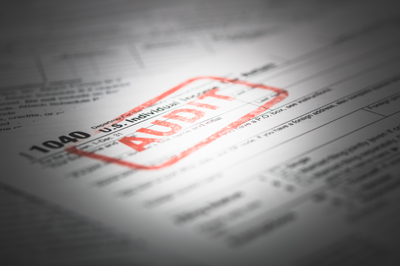With summertime activities in full swing, tax planning is probably not on the top of your to-do list. But putting it off creates a problem at the end of the year when there’s little time for changes to take effect. If you take the time to plan now, you’ll have six months for your actions to make a difference on your 2019 tax return. Here are some ideas to get you started.
Know your upcoming tax breaks. Pull out your 2018 tax return and take a look at your income, deductions and credits. Ask yourself whether all these breaks will be available again this year. For example:
- Are you expecting more income that will bump you to a higher tax rate?
- Will increased income cause a benefit to phase out?
- Will any of your children outgrow a tax credit?
Any changes to your tax situation will make planning now much more important.
 Make tax-wise investment decisions. Have some loser stocks you were hoping would rebound? If the prospects for revival aren’t great, and you’ve owned them for less than one year (short-term), selling them now before they change to long-term stocks can offset up to $3,000 in ordinary income this year. Conversely, appreciated stocks held longer than one year may be candidates for potential charitable contributions or possible choices to optimize your taxes with proper planning.
Make tax-wise investment decisions. Have some loser stocks you were hoping would rebound? If the prospects for revival aren’t great, and you’ve owned them for less than one year (short-term), selling them now before they change to long-term stocks can offset up to $3,000 in ordinary income this year. Conversely, appreciated stocks held longer than one year may be candidates for potential charitable contributions or possible choices to optimize your taxes with proper planning.
Adjust your retirement plan contributions. Are you still making contributions based on last year’s limits? Maximum savings amounts increase for retirement plans in 2019. You can contribute up to $13,000 to a SIMPLE IRA, up to $19,000 to a 401(k) and up to $6,000 to a traditional or Roth IRA. Remember to add catch-up contributions if you’ll be 50 by the end of December!
Plan for upcoming college expenses. With the school year around the corner, understanding the various tax breaks for college expenses before you start doling out your cash for post-secondary education will ensure the maximum tax savings. There are two tax credits available, the American Opportunity Tax Credit (AOTC) and the Lifetime Learning Credit. Plus there are tax benefits for student loan interest and Coverdell Savings accounts. Add 529 college savings plans, and you quickly realize an educational tax strategy is best established early in the year.
Add some business to your summer vacation. If you own a business, you might be able to deduct some of your travel expenses as a business expense. To qualify, the primary reason for your trip must be business-related. Keep detailed records of where and when you work, plus get receipts for all ordinary and necessary expenses!
Great tax planning is a year-round process, but it’s especially effective at midyear. Making time now not only helps reduce your taxes, it puts you in control of your entire financial situation.
 Sleuthing your way through a tax audit by yourself is not the same as fixing a leaky faucet or changing your oil. Here are reasons you should seek professional help as soon as you receive a letter from the IRS:
Sleuthing your way through a tax audit by yourself is not the same as fixing a leaky faucet or changing your oil. Here are reasons you should seek professional help as soon as you receive a letter from the IRS:
- IRS auditors do this for a living — you don’t. Seasoned IRS agents have seen your situation many times and know the rules better than you. Even worse, they are under no obligation to teach you the rules. Just like a defendant needs the help of a lawyer in court, you need someone in your corner that knows your rights and understands the correct tax code to apply in correspondence with the IRS.
- Insufficient records will cost you. When selected for an audit, the IRS will typically make a written request for specific documents they want to see. The list may include receipts, bills, legal documents, loan agreements and other records. If you are missing something from the list, things get dicey. It may be possible to reconstruct some of your records, but you might have to rely on a good explanation to avoid additional taxes plus a possible 20 percent negligence penalty.
- Too much information can add audit risk. While most audits are limited in scope, the IRS agent has the authority to increase that scope based on what they find in their original analysis. That means that if they find a document or hear something you say that sounds suspicious, they can extend the audit to additional areas. Being prepared with the proper support and concise, smart answers to their questions is the best approach to limiting further audit risk.
- Missing an audit deadline can lead to trouble. When you receive the original audit request, it will include a response deadline (typically 30 days). If you miss the deadline, the IRS will change your tax return using their interpretation of findings, not yours. This typically means assessing new taxes, interest and penalties. If you wish your point of view to be heard — get help right away to prepare a plan and manage the IRS deadlines.
- Relying on an expert gives you peace of mind. Tax audits are never fun, but they don’t have to be pull-your-hair-out stressful. Together, you and your expert can map out a plan and take it step-by-step to ensure the best possible outcome. You’ll rest easy knowing your audit situation is being handled by someone with the proper expertise that also has your best interests in mind.
Since you can’t get away from taxes, the best thing to do is be prepared for them. If you own a small business, taxes become a bit more complicated, but there are several ways to make sure tax time is less stressful. Here are tips 1 and 2 for small business owners.
- Think Taxes Year Around
Thinking about your taxes all year does not seem to be a way to avoid stress, but in reality, tax planning is a year-round activity when you run a small business. If you keep up with documentation and recording requirements throughout the year, you are more likely to arrive at tax time with the right paperwork ready to go.
It is also easier to take advantage of tax savings and deductions over the course of time instead of trying to put together a package of write-offs at the last minute.
- Keep accurate records all year
- Save all business related receipts, both paper and electronic, and log them for easy access
- Keep mileage logs and other expense records so they are accurate
You will find tax time much less stressful, and you will be set up to monitor changes from year to year.
- Keep Up with the Tax News
It may seem that the legislature does nothing, but laws do get passed every year. You need to keep an eye on happenings in the federal government that can impact your tax liability and business organization.
For example:
- The Affordable Care Act is still rolling out. As of 2015 it applied to businesses with 51 to 99 employees and carried stiff penalties for failing to provide health insurance to employees. Penalties also applied if you did not report the type of coverage you provided.
- Taxation of online sales is still winding its way through Congress. You need to monitor the situation, so you know if it becomes law and how it could affect you if you are an online seller if you gross more than $1 million annually.
- The Section 179 Property Deduction was extended but not made permanent. It allows business to deduct the full amount of eligible property as expenses in the year the business began using it. “Property” includes any property used in manufacturing, transporting, and producing goods, any facility used for business or research, or any buildings used to hold livestock or horticultural products.
Tax laws change all the time; keep up with the business news for ongoing legislation or last minute tax breaks.